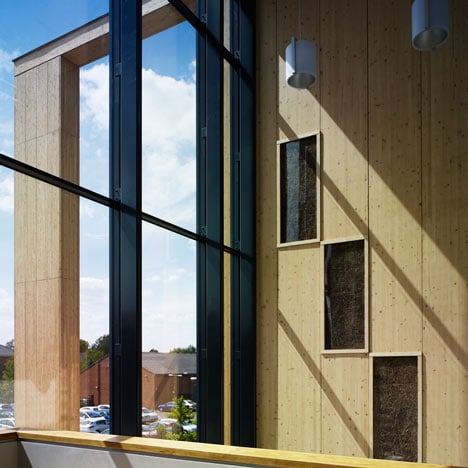
University of Nottingham Gateway Building by Make
Small windows offer glimpses of the straw used to construct this university building in Nottingham, England, by architects Make.
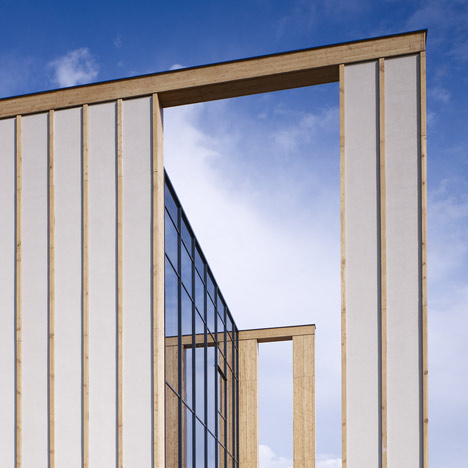
Straw bales from the University of Nottingham's farm just 200 metres from the agriculture campus are sandwiched inside the four-storey-high panels of the building's exterior wall.
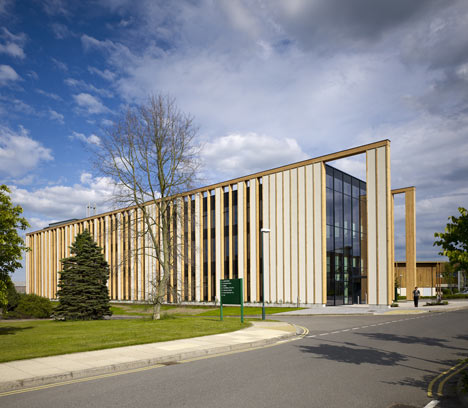
Straw is compacted inside these panels, which are covered with a breathable render that allows moisture to escape.
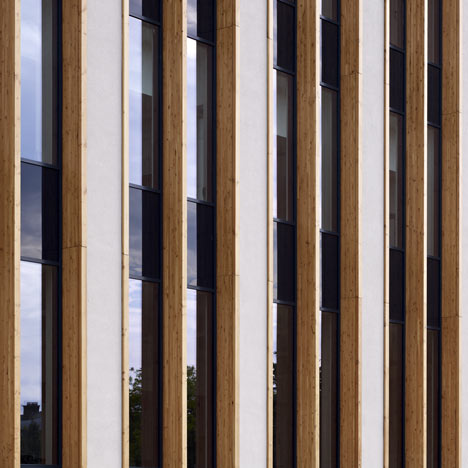
The straw bales are visible from inside the full-height glazed atrium, which provides social areas for staff and students.
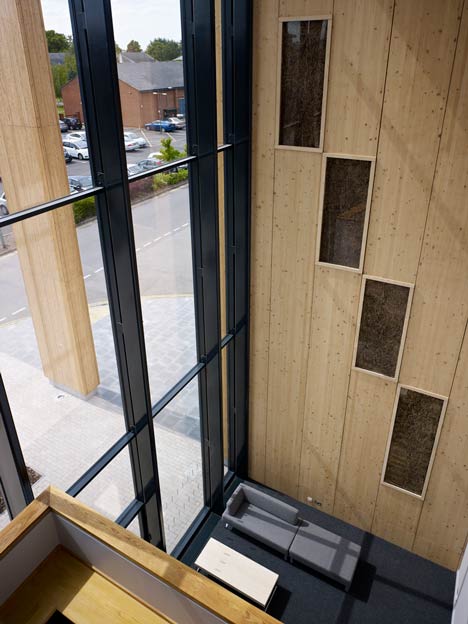
Teaching facilities, staff research laboratories and offices are contained elsewhere in the building, which is part of a masterplan of campus buildings by Make that will also be constructed from rural materials.
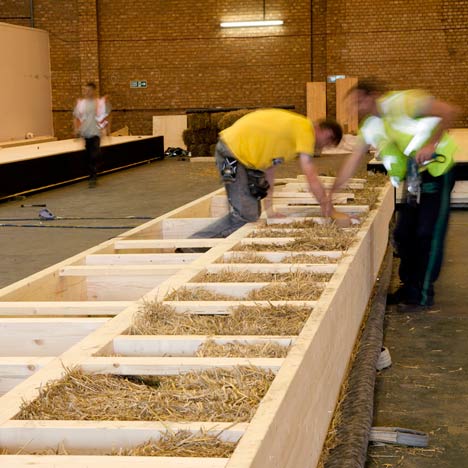
Another straw building we've featured on Dezeen is a spray-painted straw theatre and you can also see all of our stories about buildings for eduction here.
Photography is by Zander Olsen.
Here is some more information from Make:
The UK’s largest strawbale building
Make Architects has completed work on the largest single strawbale building in the UK.
The completed 3,100 sq m Gateway Building for the University of Nottingham’s agriculture campus at Sutton Bonington has taken one of the most traditional building materials and elevated it into cutting edge sustainable building technology. In an era threatened by global warming, straw is undergoing resurgence on the strength of its superb insulation qualities, its source as a natural, renewable and often local material and its minimal production costs.
At the Gateway Building, it has been applied for the first time as an external cladding system known as a ‘curtain wall’. Here each panel covers all four floors of the building in one prefabricated piece. This quick and cost-effective system is a third of the cost of a typical high end unitised curtain walling system and combined with its environmentally friendly properties holds the potential to place straw in the mainstream of construction practice.
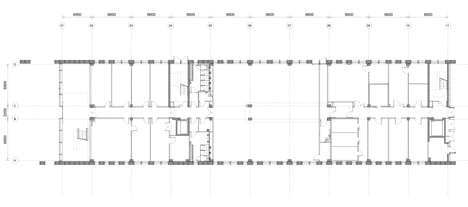
Click above for larger image
Bob Leung, Architect and Partner at Make said: “The straw was grown on the University’s farm just 200m down the road and our sub-contractor, Eurban, set up a ‘flying factory’ on site in order to create the panels there and then. This natural, simple solution provides a fabulous juxtaposition with the high-tech research that actually goes on within the building itself.
Tim Brooksbank, Development Director at the University of Nottingham said: “We had an exacting brief for this new building in terms of its cost and specification and are delighted with the finished building which has provided a state-of-the-art home for the School of Biosciences and the School of Veterinary and Medical Sciences (SVMS)."

Click above for larger image
The Gateway Building houses a combination of laboratories and offices, but despite this has a remarkably low-carbon, low-energy footprint and boasts an ‘Excellent’ BREEAM rating for energy efficiency. The deep straw-filled panels have a low U-value of just 0.135 W/m2, which is 60% better than required under current Part L regulations. A CHP plant generates electricity consumed in the building and feeds excess power back into the national grid. In this way, it accounts for a 13% saving in the building’s carbon emissions.
The new building sets the scene for a visionary new campus masterplan, also designed by Make, the primary aim of which was to consolidate and enhance existing facilities on the campus and, in doing so, create an environment conducive to innovation, research and learning.
The building’s crisp form frames the beginning of a future central avenue and serves as a gateway to the Campus. The facades of the building are made up of repetitive narrow vertical elements that echo rows of trees nearby. These are finished in render and separated by exposed timber fins. A modern glazing system is arranged in between the timber elements, creating a rhythm from the contrasting qualities of the facade system.